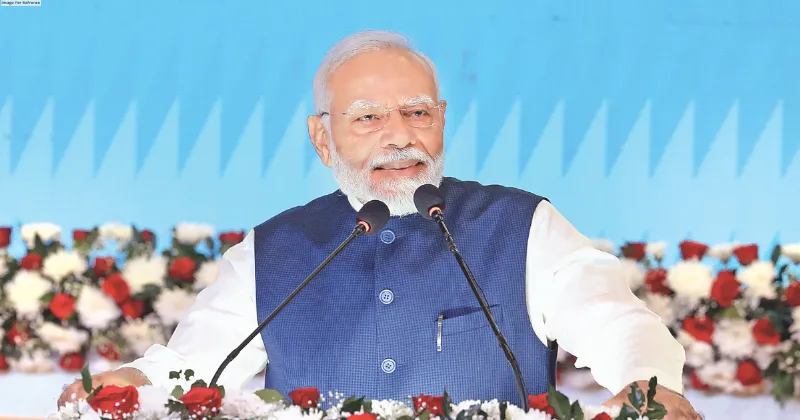Latest News
A solution to the environment and unnecessary expenditure

Currently everyone is changing their mobile phone on an average every 2 years. At this rate you will have used approximately 30 phones in your lifetime. Similarly, other electronic and electrical products go out of the market with changing models and due to consumerist culture, the common man makes changes in the name of advanced use or fashion. While doing all this, one does not even realize the fact that How much carbon would have been emitted during the manufacturing of the item? According to a rough estimate, about 80 percent of the carbon emission impact of any smartphone occurs during its manufacturing process and the remaining during use, i.e. every time the product is replaced, the more severe the carbon emission impact will be. According to recently released data, last September was the hottest September of the century. If there is anything directly responsible for this, it is pollution.
There is a Right to Repair campaign going on all over the world with the aim of extending the life and making use till end of life of various consumable products. While the objective of this campaign is environmental protection, it is also aimed at ending the monopoly of the manufacturing companies in repairing these products and thus providing economic relief to end consumer. This movement is basically being run against the monopoly prevailing in the repair of electric and electronic and automobile products. At present, for repair of products, one has to completely depend on the place authorized by its manufacturer, otherwise its limited warranty also gets voided. It was also found that many companies have strategy of complete obsolescence of their earlier products so that due to lack of spare parts, the consumer has no option but to throw away. This can also be termed as a marketing conspiracy. This is why companies like Apple and Microsoft strongly opposed the movement. As a result of the law and pressure applied in America, Apple has recently agreed to the Right to Repair. Due to the monopoly of big manufacturers, the local economy along with micro and small repairmen, skilled engineers and assistants all over the world was facing a crisis. This monopoly was also having an adverse effect on the end consumer as he had to pay un-arbitrary high price as per the demand of the manufacturer. There was no other option except to get repaired at non negotiable cost.
It is noteworthy that about 50 million tonnes of e-waste is generated every year in the whole world and India alone produces onethird of that i.e. 16 million tonnes. Due to lack of resources, only one third is getting recycled or processed. This quantity is equivalent to 800 laptops being thrown away every second. If we analyze toxic waste, 70 percent of it is ewaste. What a serious threat to the entire humanity, is being created by us, because of our irresponsible consumption and consumerist culture. Keeping these facts in view, the foundation of the Right to Repair movement was laid so that this increasing number could be curbed. There are many other reasons for the hindrance in curbing production but promoting repair culture till end of life is an effective step to reduce the amount of e-waste at the consumer level on a large scale. According to estimates, if the consumer gets the facility of easy repair, then the replacement of electronic products can be reduced by more than half. Most of the consumers today replace the items because there is no repair facility, if there is any, those are authorised by manufacturer At limited sites. If he gets the repair done elsewhere, there is a fear of voiding the warranty and the fear of the quality of the parts being used for repair being genuine or fake. He prefers to change the product rather than getting trapped in all these complexities and webs.
The basic purpose of Right to Repair is to force manufacturers to make available parts, tools, diagnostic equipment, and all information related to their products to consumers and all those who may use them, to make repairs widespread and To stop the material going to the landfill. With the legalization of this right, the lifespan of various items being used like mobile phones, washing machines, fridges etc. will automatically increase and indirectly household expenditure will also be reduced. As a result of the movement launched by The Repair Association, United States of America and various states have passed the first Right to Fair Repair law. New York is the first state to adopt this law in the United States. Now more than half of the states of America have given their consent to this. Similarly, United Kingdom, Australia and European Union countries have also passed laws to promote repair and give the right to repair to the consumer in view of the circular economy. France has taken a pioneer step in this direction and has imposed the obligation on manufacturers to mention the repairability rating on each product so that an appropriate decision can be taken at the time of purchase. Under the rules passed by the European Union, the manufacturer has been obliged to provide related spare parts to all repairers for a period of ten years from the date of production of the equipment.
In a unique initiative, repair cafes have been set up in Australia where the general public can get their products repaired free of cost by skilled volunteers. In India, a committee has been formed under the Consumer Affairs Department to legalize the right to repair, so that every person can use his/her device for its entire life. Although there is no law or rule related to the right to repair, but the Competition Commission of India has In the Shamsher Kataria Versus Honda CL Cars India case, passed an order as “giving the authorized spare parts only to designated workshops was considered an anti-competitive practice and directions were given to make the spare parts easily available”.
Due to the effective lobby of car manufacturers, this decision could not have widespread impact and implementation. As a result, even today most of the consumers are dependent on manufacturer authorized sites only.
THE VIEWS EXPRESSED BY THE AUTHOR ARE PERSONAL
Dr Vivek S Agrawal The writer is a specialist on Urban Health and Environment





















